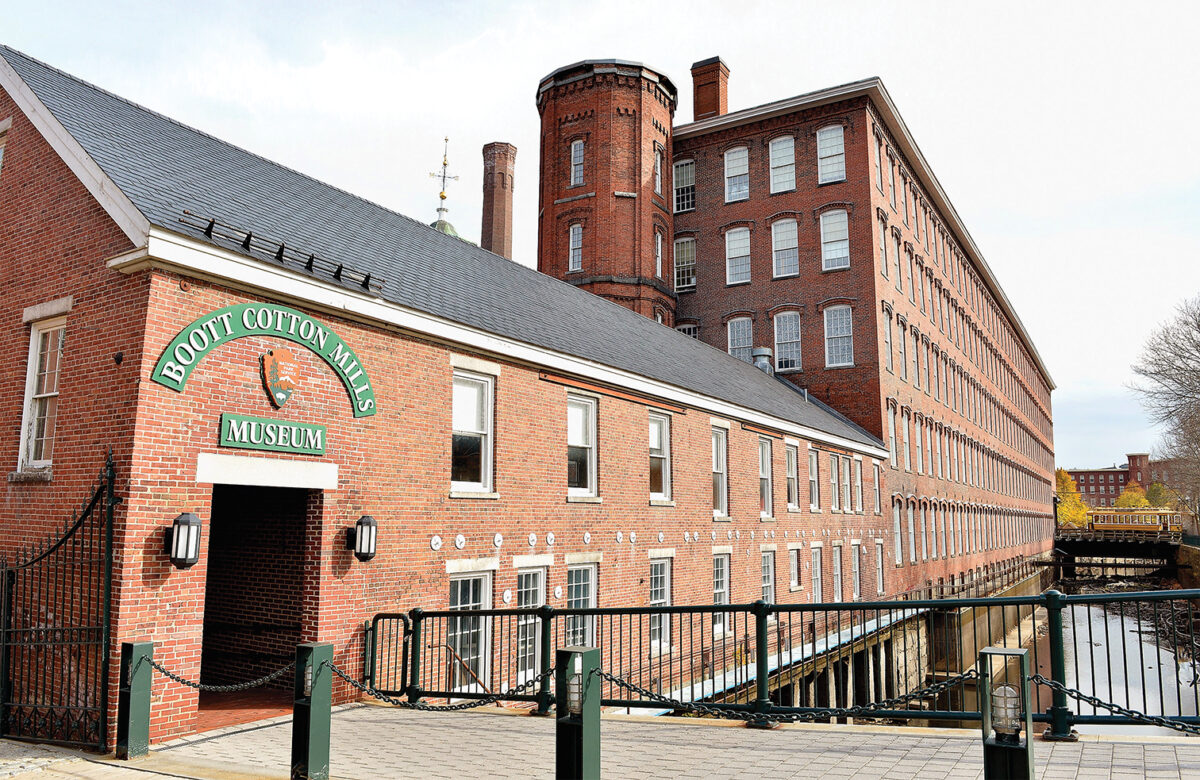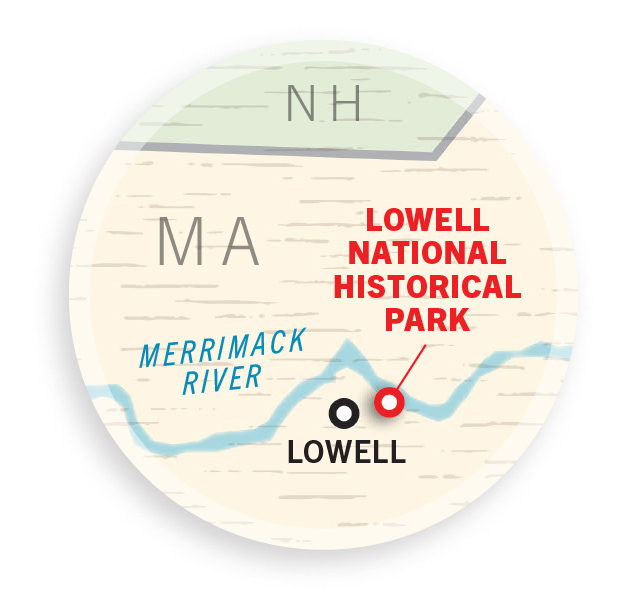
Factory bells governed the day in early 19th-century Lowell, Mass. They summoned the mostly young women workers to the cotton mills at 4:30 a.m., signaled meal breaks, sent them home to company boardinghouses after their 12- to-14-hour shifts, and sounded curfew at 10 p.m.
The keepers of the boardinghouses were both caretakers and disciplinarians. They cooked meals and enforced moral codes. They made sure the “mill girls,” America’s first factory laborers, went to sleep on time and to church on Sunday.
This was life in a company town—the first planned company town in the United States. It wasn’t devised that way from the start, however. When the company founders traveled northwest of Boston in late 1821, it was simply to assess a potential factory site on the Merrimack River. Mainly, could the falls there reliably power textile machinery?
The answer was yes, and they bought the land. In 1823, the first machinery started processing raw cotton into cloth. Three years later, the land was incorporated as Lowell, named after the company’s late co-founder Francis Cabot Lowell.
The workers were mostly single women ages 15 to 30 from financially strapped families in the outlying areas. They needed places to live, so the company built the boardinghouses. A town with shops, churches, and other destinations eventually rose up.
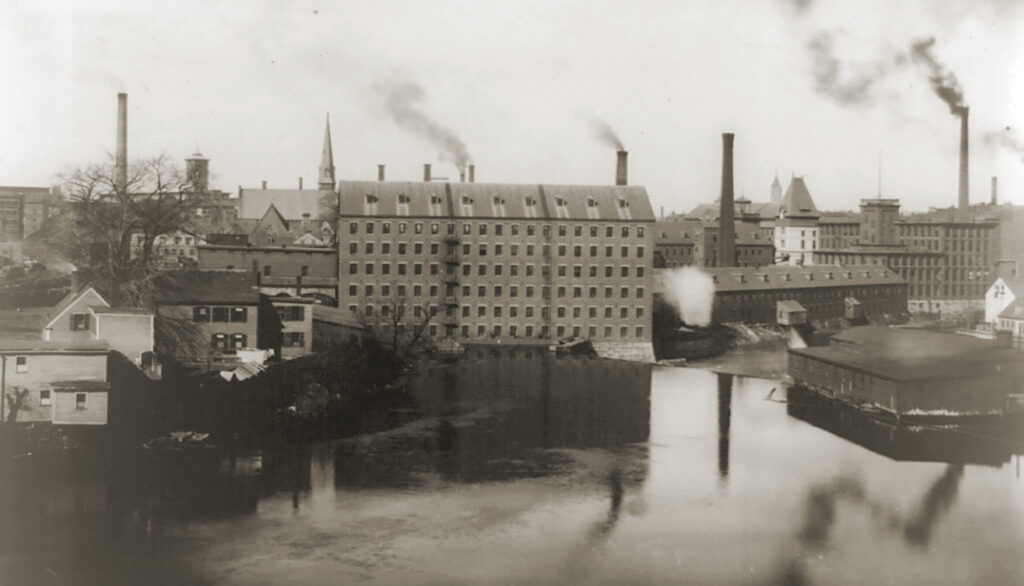
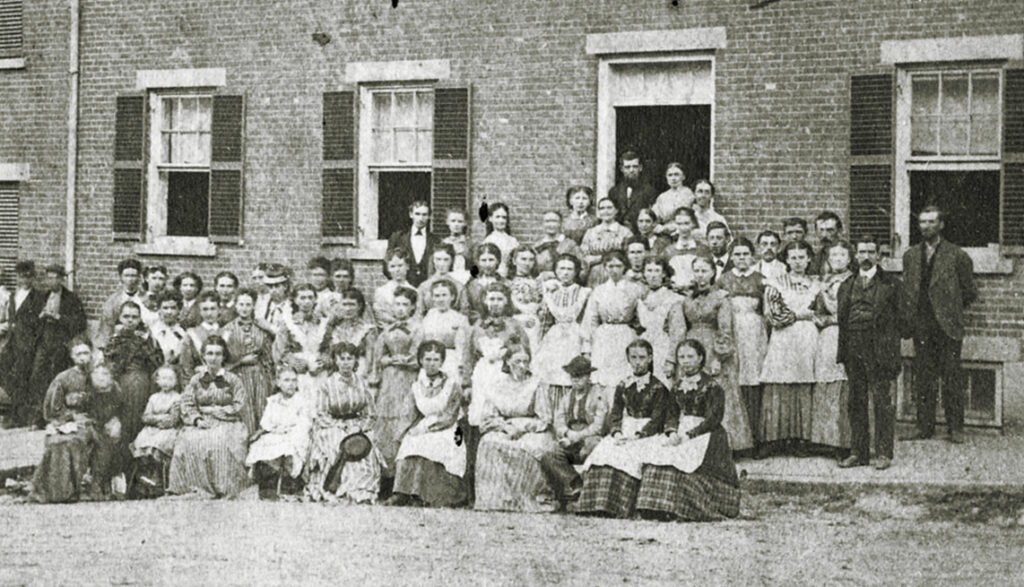
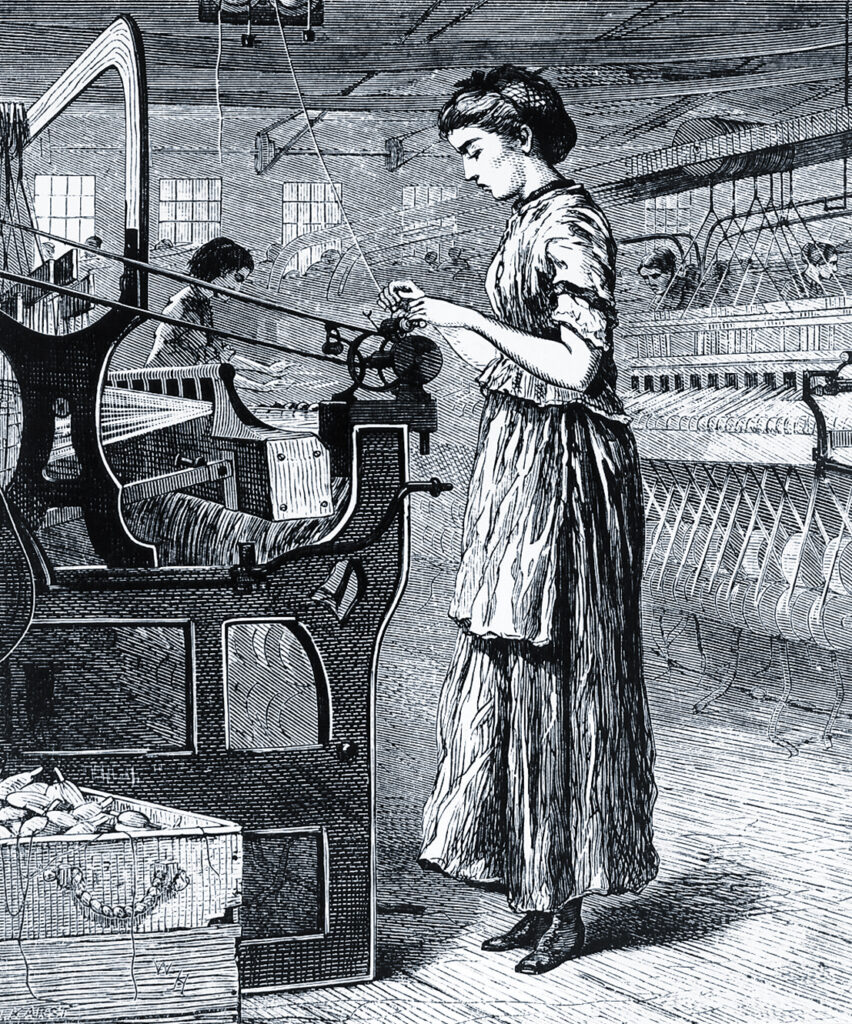
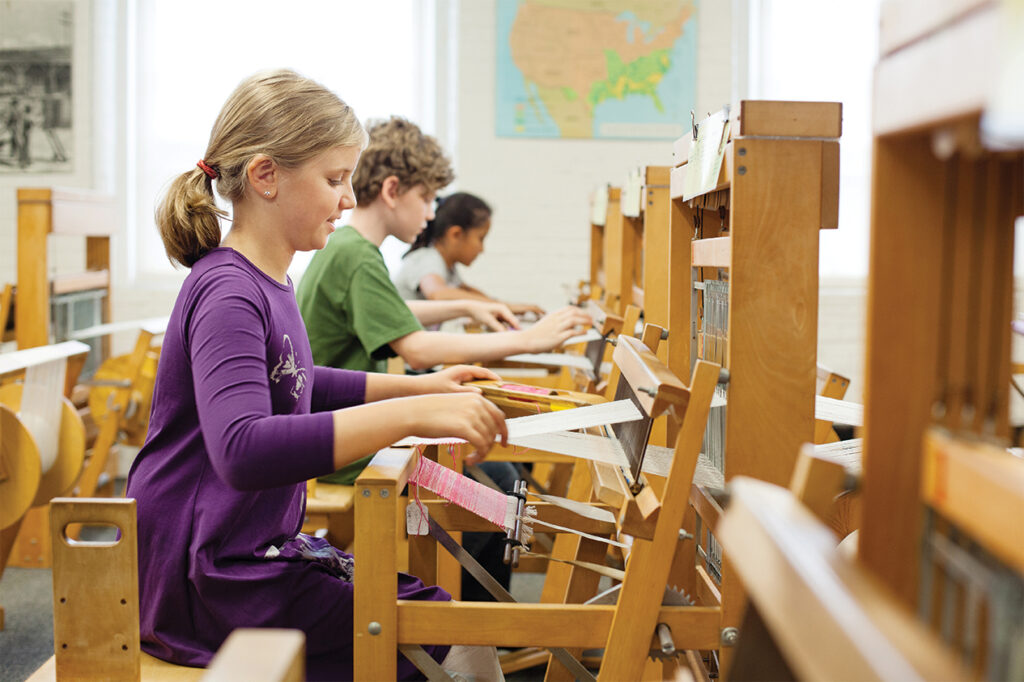
With production growing fast, recruiters visited farms and villages to find help. The families there needed the money but were skeptical about sending their single daughters to live away from home. The promise of cash pay caught their attention. The living situation in Lowell sealed the deal, as many families concluded their girls would be protected, nurtured, and provided for.
By 1850, red brick boardinghouses and five- and six-story factory buildings lined the river for nearly a mile, the work force surpassed 10,000, and Lowell was the top textiles manufacturing location in the country. The mills continued operating another 70 years after that. They slipped into full decline only after World War I and the disappearance of military contracts.
Red Brick and Mortar
The Lowell National Historical Park spotlights preserved 19th-century mills and boardinghouses, as well as the network of canals that allowed boats to pass around the Pawtucket Falls for incoming deliveries of supplies and outgoing shipments of finished textiles.
The 88 water-powered looms at the park’s Boott Cotton Mill still run as they did back in the day, giving visitors an up-close look at the operation that gave the town its reason to be.
The 1840s boardinghouse exhibit in the Morgan Cultural Center, with kitchen and communal dining room downstairs and bedrooms upstairs, tells the story of the day-to-day life of the workers in company housing.
This story appeared in the 2023 Autumn issue of American History magazine.
historynet magazines
Our 9 best-selling history titles feature in-depth storytelling and iconic imagery to engage and inform on the people, the wars, and the events that shaped America and the world.


